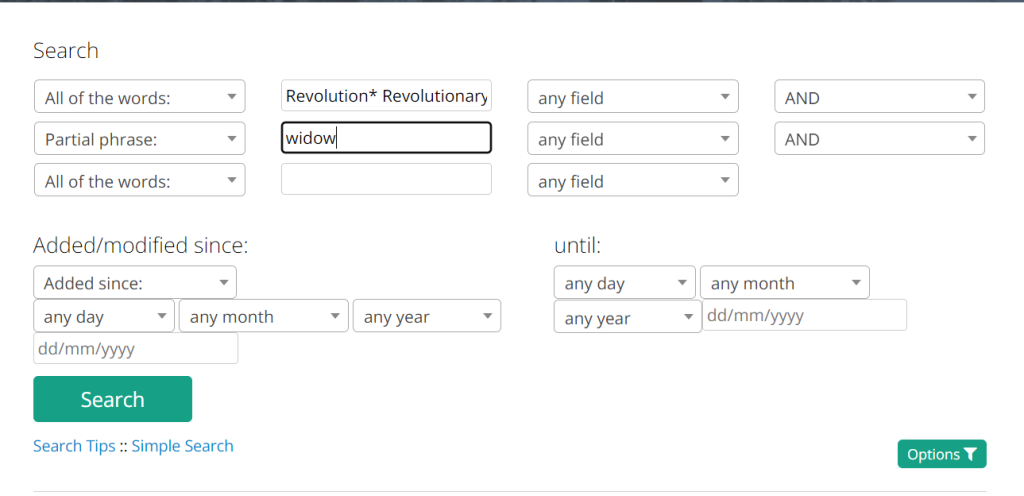We love being sent or just stumbling upon, projects on the web that utilize materials digitized through the North Carolina Digital Heritage Center. We thought since they have done such a great job highlighting us, it’d only be fair to turn around and highlight a few we’ve found recently.
Today’s featured website is “Black Wide-Awake” which highlights “documents of historical and genealogical interest to researchers of Wilson County, North Carolina’s African American past.”
The site, written by Lisa Henderson and with posts dating back to 2015, utilizes a wide variety of digitized historical resources to document everything from African-American schools in the Wilson area, wills, correspondence, and newspaper articles related to the enslaved people in Wilson County, to official records including marriage, birth, and death records from the Black community.
Some of the DigitalNC resources that are featured on Black Wide-Awake include many of the photographs and other materials from the Oliver Nestus Freeman Round House Museum’s collection.
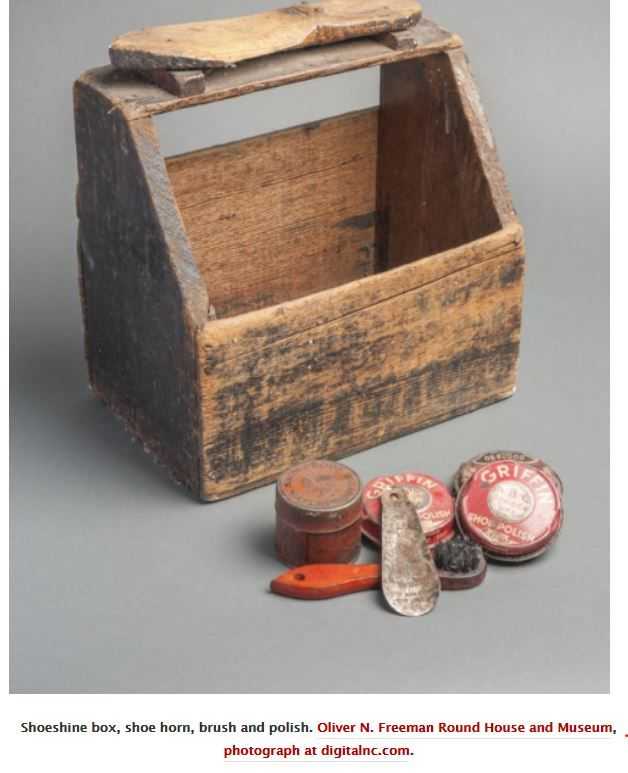
Shoe shine kit from the Oliver Nestus Freeman collection, featured in this post on Black Wide Awake.
Wilson City Directories
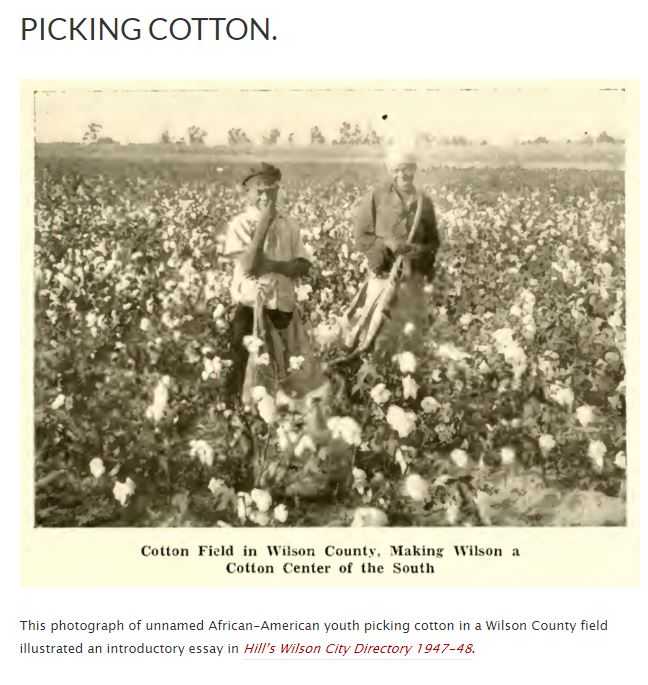
Photograph from the 1947-1948 Wilson City Directory, featured in this post on Black Wide Awake.
Yearbooks from Darden High School, made possible by our partner Wilson County Public Library
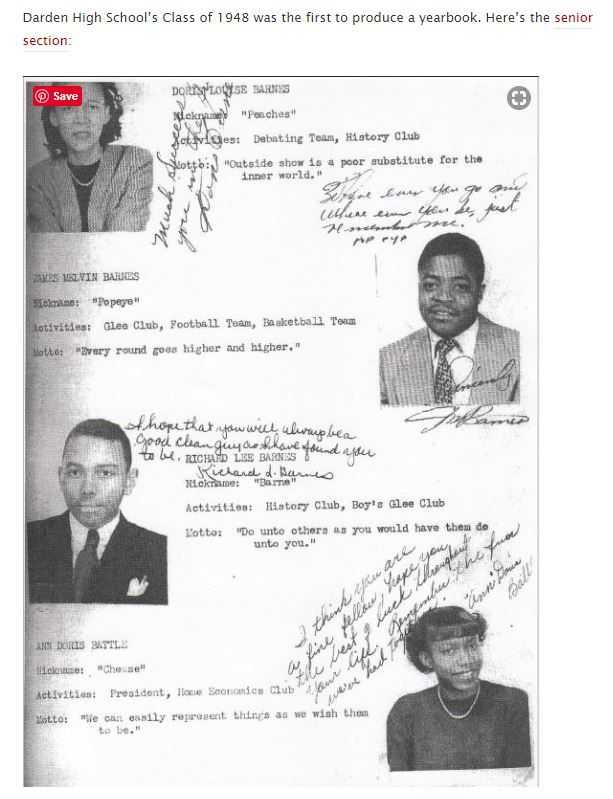
Senior page from the 1948 Charles H. Darden High School yearbook, the first yearbook from the school, featured in this post on the website.
Many newspaper article clippings from DigitalNC are also included. A post discussing the white supremacist views held and pushed by editor of the Wilson Advance, Josephus Daniels, is a recent post that connects directly to the current commentary going on regarding Black Lives Matter and reassessing how we look at our history.
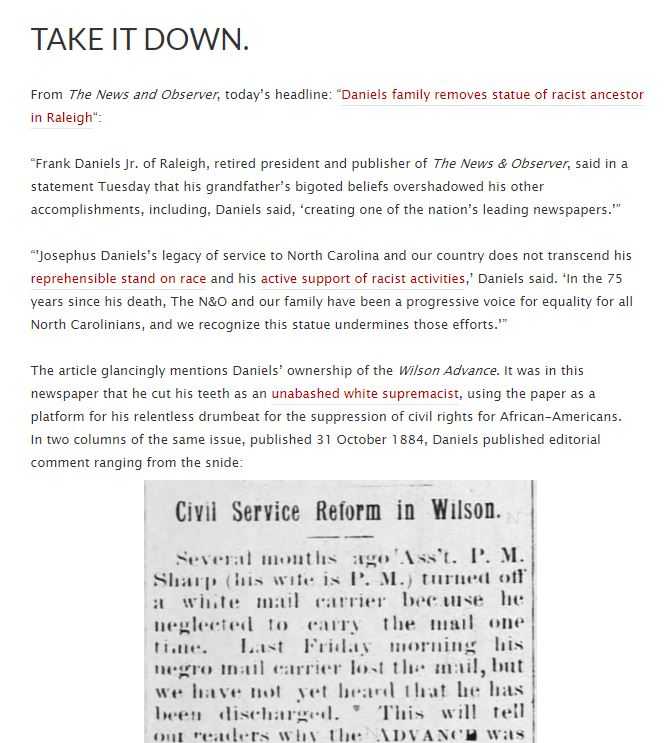
Post on Black Wide Awake pointing out the racist statements the editor and publisher of the Wilson Advance, Josephus Daniels, made regularly in a call to take down any statue or other dedication marker to him in North Carolina.
The work done on this website is a fascinating look into how resources on DigitalNC can really help illuminate a North Carolina community’s past. Thanks for using us Ms. Henderson! We encourage anyone with an interest in genealogy and local history, particularly for the Black community in North Carolina, to visit the site.
If you have a particular project or know of one that has utilized materials from DigitalNC, we’d love to hear about it! Contact us via email or in the comments below and we’ll check out. To see past highlighted projects, visit past posts here.
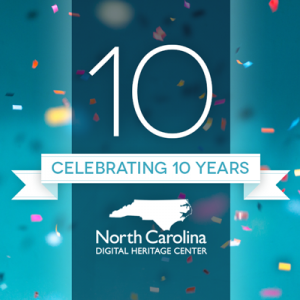 It’s DigitalNC.org’s 10th birthday! Though we had hoped to be in the office celebrating, we’re still taking time to look back at years of hard work and the collaborative spirit that makes the North Carolina Digital Heritage Center (NCDHC) what it is!
It’s DigitalNC.org’s 10th birthday! Though we had hoped to be in the office celebrating, we’re still taking time to look back at years of hard work and the collaborative spirit that makes the North Carolina Digital Heritage Center (NCDHC) what it is!
To date, NCDHC has partnered with 273 libraries, museums, alumni associations, archives, and historic sites in 98 of North Carolina’s 100 counties and we’re growing all the time. Our website currently includes 4.2 million images and files. We share this accomplishment with every institution we’ve worked with. We’d never have gotten to 10 years without staff (permanent, temporary, and student!), our partners, or the network of colleagues all over North Carolina who have encouraged, advised, and supported our work.
As we approached our anniversary, we realized that our website lacked a synopsis of how NCDHC came to be, and our history. So read on for a brief look at how we got started and our major milestones.
Our History
The North Carolina Digital Heritage Center was one outcome of a comprehensive effort by the state’s Department of Cultural Resources (now the Department of Natural and Cultural Resources) to survey and get a broad overview of the status of North Carolina cultural heritage institutions. That effort was entitled NC ECHO (North Carolina Exploring Cultural Heritage Online) and was funded by the Institute of Museum and Library Services (which also supports us – thanks IMLS). A major goal of NC ECHO was a multi-year needs assessment. NC ECHO staff visited hundreds of cultural heritage institutions throughout the state to collect data and interview curators, librarians, volunteers, archivists, and more. Many of our partners still remember their visits!
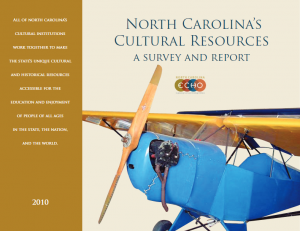 Data collected at these site visits was combined with survey responses to reveal a “state of the state,” summarized in a 2010 report, cover pictured at right. The assessment revealed a lot but, specific to digitization, staff found that nearly three-quarters of the 761 institutions who completed the survey had no digitization experience or capacity. Members of the Department of Cultural Resources (which includes the State Library, State Archives, and multiple museums and historic sites) began brainstorming with other area institutions about a way to help efficiently and effectively provide digitization opportunities. While the NC ECHO project offered digitization grants, workshops, and best practices, an idea emerged of a centralized entity that could assist institutions that didn’t have the capacity to do the work in house. The State Library of North Carolina and UNC-Chapel Hill Libraries joined together to create such an entity: the North Carolina Digital Heritage Center. The Center would be located in Chapel Hill, taking advantage of its central location and the digitization equipment and expertise already available in Wilson Special Collections Library. The State Library would provide funding, guidance, and ongoing promotion and support of the Center’s services.
Data collected at these site visits was combined with survey responses to reveal a “state of the state,” summarized in a 2010 report, cover pictured at right. The assessment revealed a lot but, specific to digitization, staff found that nearly three-quarters of the 761 institutions who completed the survey had no digitization experience or capacity. Members of the Department of Cultural Resources (which includes the State Library, State Archives, and multiple museums and historic sites) began brainstorming with other area institutions about a way to help efficiently and effectively provide digitization opportunities. While the NC ECHO project offered digitization grants, workshops, and best practices, an idea emerged of a centralized entity that could assist institutions that didn’t have the capacity to do the work in house. The State Library of North Carolina and UNC-Chapel Hill Libraries joined together to create such an entity: the North Carolina Digital Heritage Center. The Center would be located in Chapel Hill, taking advantage of its central location and the digitization equipment and expertise already available in Wilson Special Collections Library. The State Library would provide funding, guidance, and ongoing promotion and support of the Center’s services.
At its beginning, the Center’s staff digitized small collections of college yearbooks, needlework samplers, postcards, and photographs and made them available through DigitalNC.org. They went to speak with organizations interested in becoming partners, and began taking projects for digitization. Here’s a list of NCDHC’s earliest partners, who came on board during late 2009 and 2010.
Though we’re not positive of the exact date, we believe DigitalNC.org launched on or near May 12, 2010. Here’s a look at that original site!
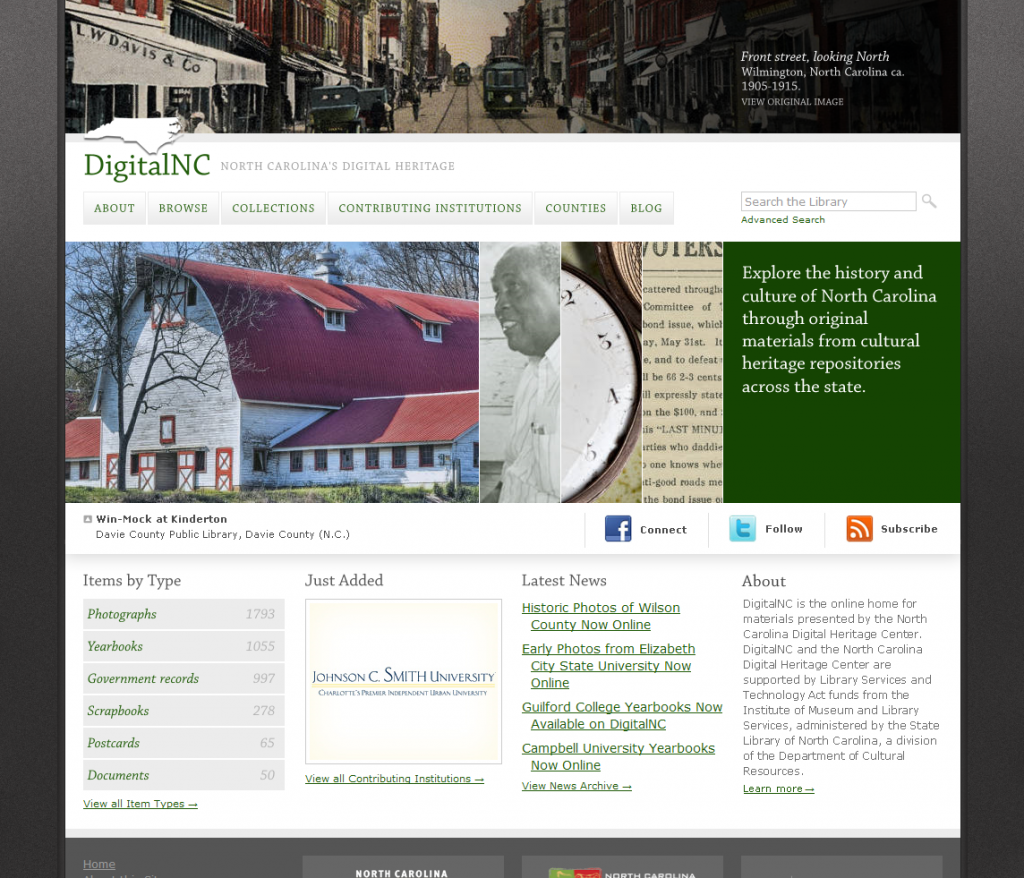
In 2011, word about the Center spread. Staff started responding to demand from partners, incorporating newspaper digitization. In late 2012, also in response to popular demand, the Center began digitizing high school yearbooks. Yearbooks and newspapers are some of the most viewed items on DigitalNC, and they remain a significant portion of our work to this day.
In 2013, NCDHC joined the Digital Public Library of America (DPLA) as North Carolina’s “service hub.” The DPLA collects information from digitized collections all over the nation and provides it together in one searchable interface at dp.la. Because of our participation, users can browse and search for collections from North Carolina alongside items from institutions around the country.
Throughout the years, we’ve tried to expand services to fit our partners’ goals. In 2015, we trialed an audiovisual digitization project that incorporated the first films into DigitalNC. Today, we partner with the Southern Folklife Collection at Wilson Special Collections Library to provide audio digitization on an ongoing basis. In 2016, we added a new partner category – alumni associations – to support more digitization of African American high school yearbooks and memorabilia. The following year, we announced a focus on digitization of items documenting underrepresented communities. We also started going on the road with our scanners! For institutions that don’t have the staff time or resources to travel to Chapel Hill, we offer to come for a day or two and scan on site.
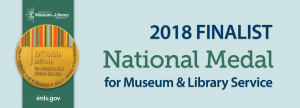 2018 and 2019 saw several major milestones. We were nationally recognized as an Institute of Museum and Library Services National Medal finalist, and we began a major software migration. Both were a tribute to the size and extent of our operation, though in different ways. As we’ve approached our 10th anniversary we’ve focused on working with partners in all 100 of North Carolina’s counties. Whether you’re rural or metropolitan, we believe your history is important and should be shared online.
2018 and 2019 saw several major milestones. We were nationally recognized as an Institute of Museum and Library Services National Medal finalist, and we began a major software migration. Both were a tribute to the size and extent of our operation, though in different ways. As we’ve approached our 10th anniversary we’ve focused on working with partners in all 100 of North Carolina’s counties. Whether you’re rural or metropolitan, we believe your history is important and should be shared online.
One of the ways we’re commemorating this anniversary is to ask our partners and stakeholders how they think we’ve impacted them and their audiences. Join us here on the blog in the second half of 2020 as we share these brief interviews, reflect, and celebrate. Thank you for reading, enjoy the site, and here’s to another 10 years of making North Carolina’s cultural heritage accessible online!
We’ve taken a look back at this year’s top 5 most viewed items on DigitalNC, and they may not be what you expect! Here they are in order of popularity.
#1 Madison Beach
Contributing Institution: Rockingham Community College
The most viewed single item on DigitalNC was this photo:
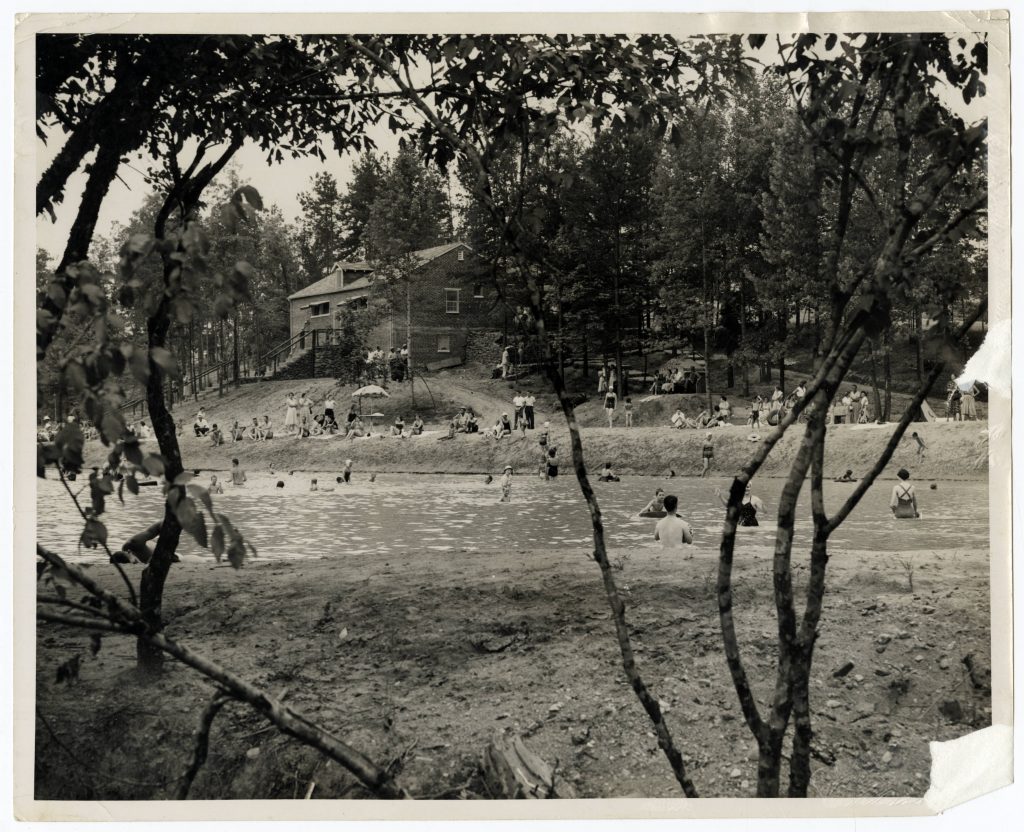
Want to know more about Madison Beach? We did, and found this page in a Rockingham County Public Library volume by local author John T. Dallas to help us out.
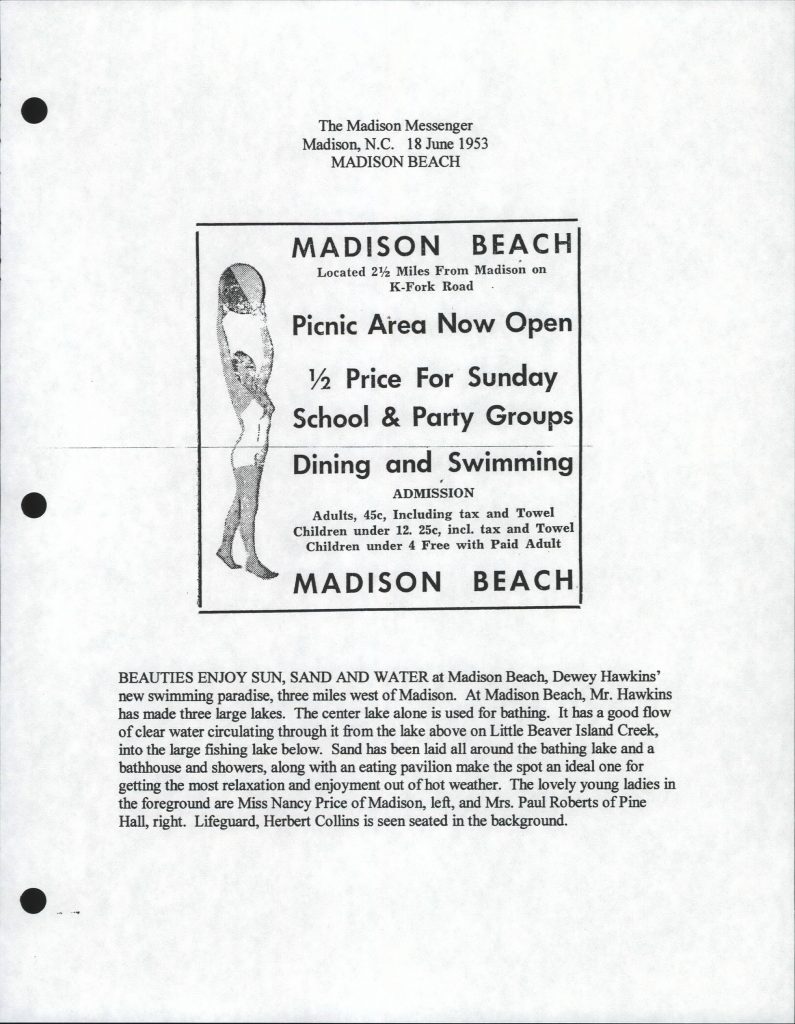
#2 Newspaper Clippings about the Hibriten Company
Contributing Institution: Hickory Public Library
Hickory Public Library has shared a variety of files related to local businesses, and this one on Hibriten Furniture was the second most popular item.
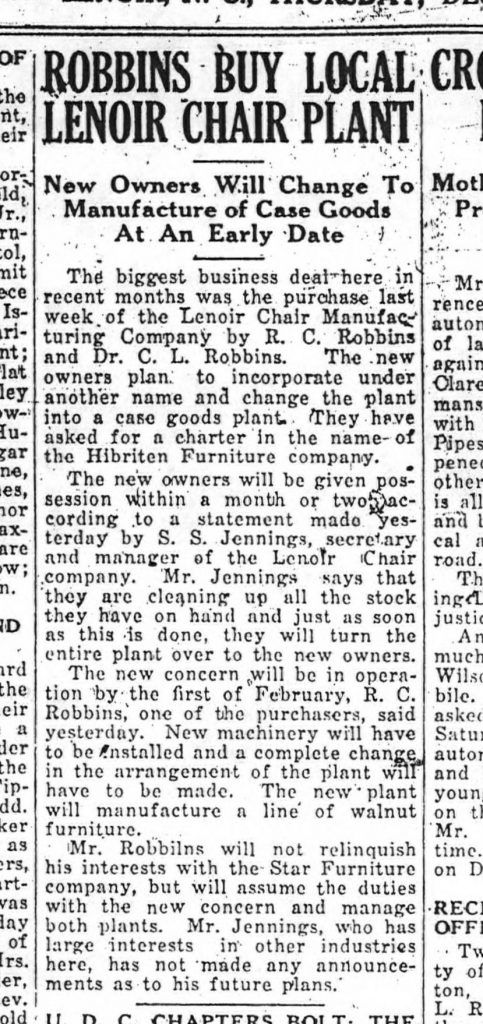
#3 Jim Thornton Band
Contributing Institution: Harnett County Public Library
This picture of Jim Thornton and his band includes Congressman Harold D. Cooley and singer Mozelle Phillips. The band played at dances and events, as well as on the radio and a live country music television show out of Raleigh entitled “Saturday Night Country Style.”
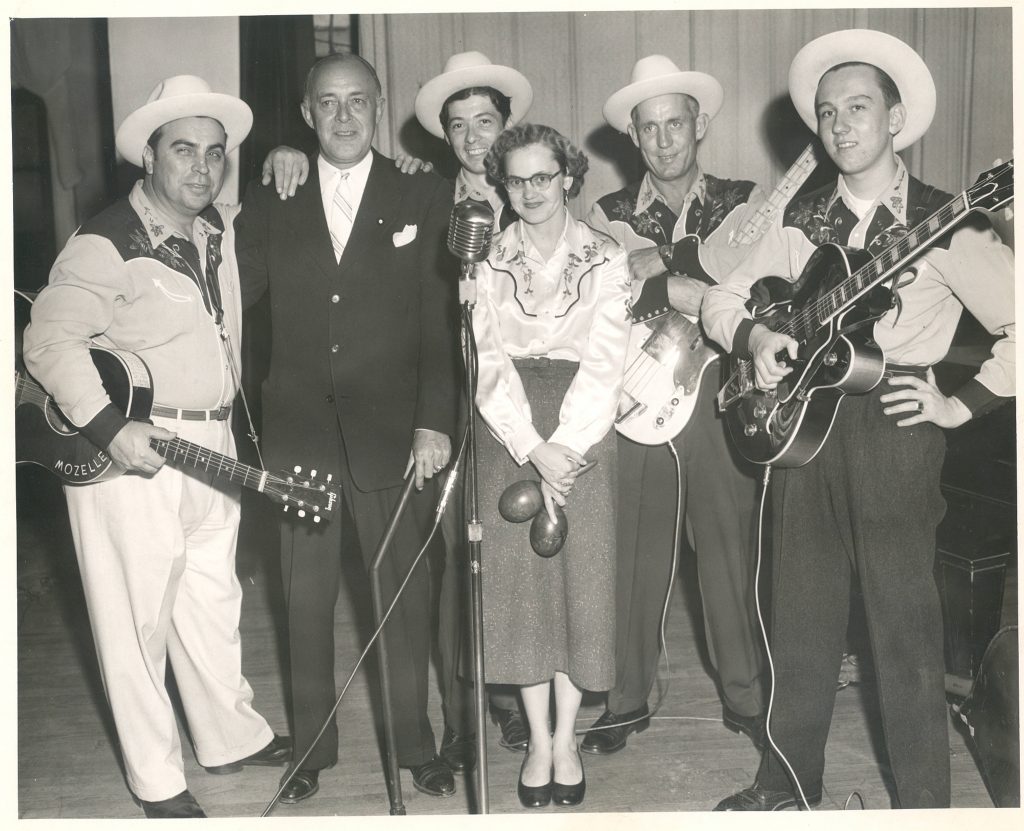
#4 Wiggins Mill Bridge Postcard
Contributing Institution: Wilson County Public Library
From the 1880s, this postcard shows the bridge spanning Contentnea Creek in Wilson County, with “Wiggin’s Mill” and the reservoir waterfall in the background. Wiggin’s Mill was a sawmill, and can be found in newspapers of that era as a local landmark both on land and on the creek. The Wilson Advance describes the Wiggin’s Mill bridge floating away in a “freshet” in June 1891.
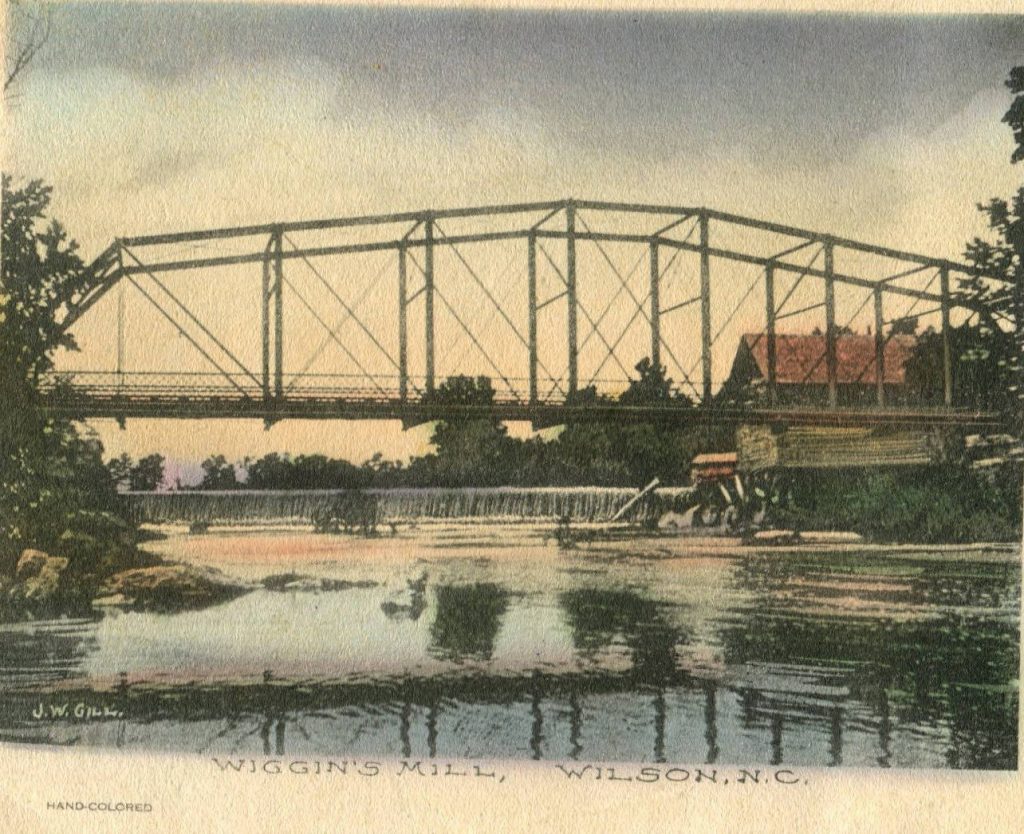
#5 1976 Yackety Yack Yearbook
Contributing Institution: UNC-Chapel Hill
Taken together, yearbooks are the most popular items available on our site. It’s not surprising that one made the top 5 list. This 1976 Yackety Yack has spectacular photographs with 1970s style.
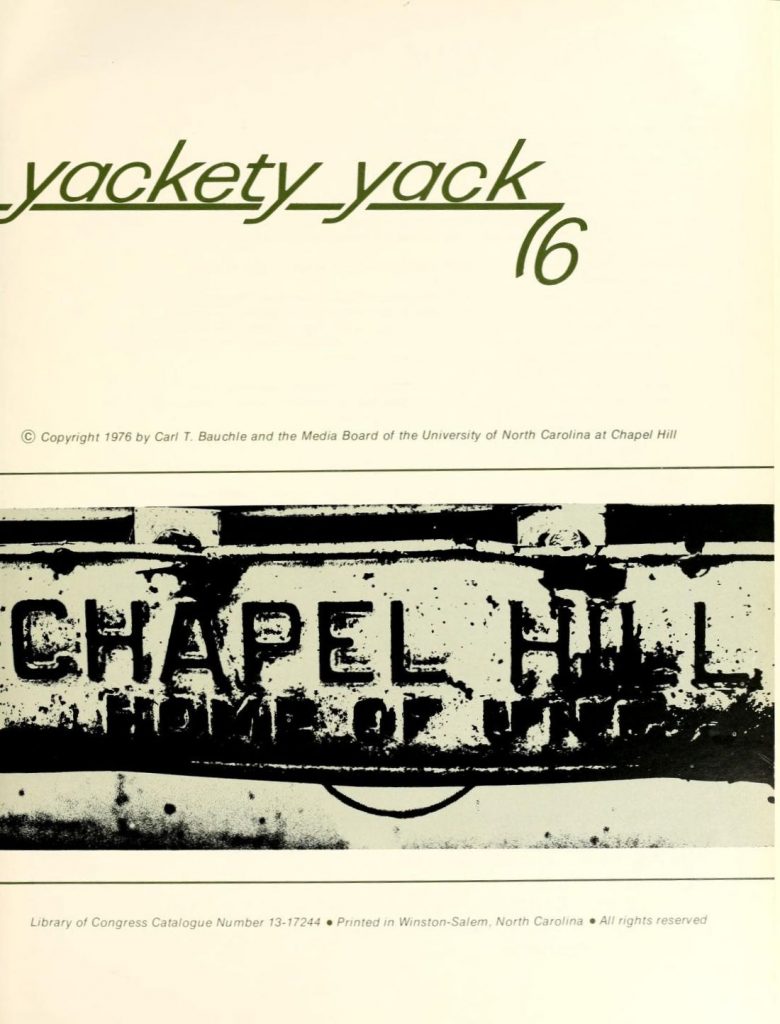
For the curious, here are some overall numbers for DigitalNC for 2017. Here’s looking forward as we work with partners to share even more of North Carolina’s cultural heritage in 2018!
| Pageviews |
3,510,047 |
| Users |
390,667 |
| Scans Added |
567,315 |
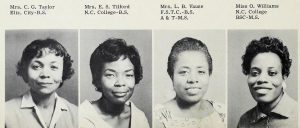
Faculty portraits in the 1963 Longhorn by Woodington High School.
More than 60 high school yearbooks provided by Eastern Carolina University are now up on DigitalNC. The schools represented are located across central and eastern North Carolina and include schools from Pitt County, Franklin County, Stokes County, Washington County, Hertford County, Lenoir County, Martin County, Halifax County, Wilson County, and Johnston County. The dates of these yearbooks range from 1927-1970. Together, they give an overview of secondary education across the state, with many of the editions covering the time surrounding desegregation efforts. These yearbooks include individual and class portraits as well photographs documenting activities, clubs, sports, and academics.

Senior portraits from the Kay Aitch Ess 1927 yearbook by Grainger High School
Follow the links below to browse yearbooks from the schools included in this batch:
To see more materials from our partner who provided these yearbooks, visit East Carolina University’s partner page, or take a look at their website.
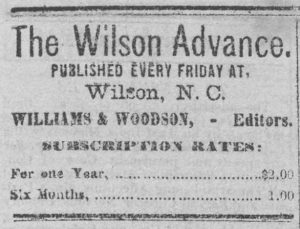
Part of The Wilson Advance header from the March 24, 1876 issue.
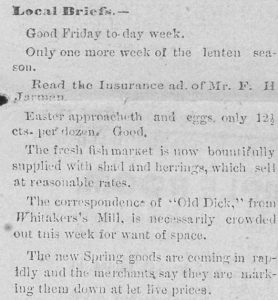
The Local Briefs section detailing happenings of the week as seen on the first page of the March 30, 1876 issue.
Two more issues of The Wilson Advance from March of 1876 are now up on DigitalNC, courtesy of our partner Wilson County Public Library. These issues join many previously digitized issues from 1874-1899 and give a glimpse into daily life in Wilson N.C. during the late 1800s. The Wilson advance was published every Friday, and included local and national news stories as well as obituaries, marriage announcements, events, and advertisements.
To view the new issues, click the links below:
To view more issues of The Wilson Advance on DigitalNC, click here. To see more materials from Wilson County Public Library, take a look at their partner page, or visit their website.
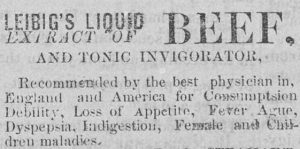
An advertisement for Leibig’s Liquid Extract of Beef from page 2 of the March 24, 1876 issue.
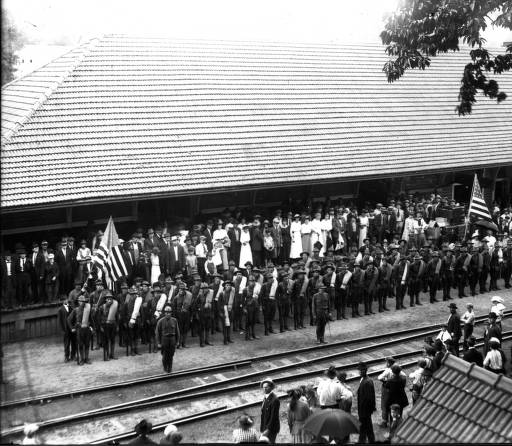
Company H, WWI, 1st North Carolina Infantry of the National Guard, departed Waynesville’s train depot on June 26, 1916. They guarded the Mexican border and returned to Waynesville in February 1917. In July 1917 they then were sent to France during WWI. Courtesy of Haywood County Public Library.
Last Thursday, April 6, 2017, marked the 100th anniversary of the United States’ entry into World War I. Over the next year, many cultural heritage institutions around the country are highlighting the materials they hold related to the “Great War.” We wanted to highlight some of the fantastic local North Carolina materials we have digitized for our partners that document the World War I perspective from North Carolinians’ eyes.
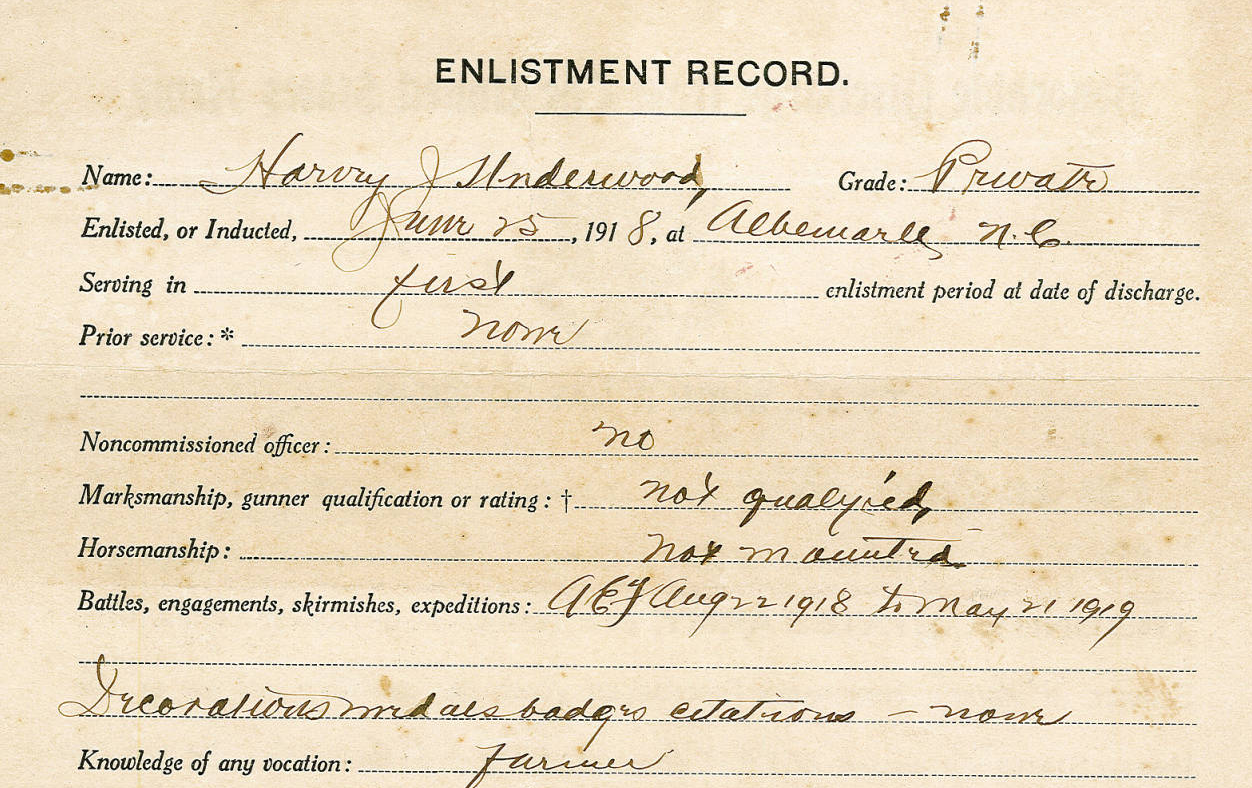

Service records, photographs, news clippings and letters back home from communities across the state are digitized here on DigitalNC. From Wilson County, we have a set of records from 70 men that served in the war that the United Daughters of the Confederacy collected and a scrapbook that includes letters from a Robert Anderson before he was wounded in action and died in France. From Stanly County, we have an enlistment record that includes the amount Harvey Jarvis Underwood was paid to serve, and a history of the service records of Stanly County men who served in the war. From the Grand Lodge of the Ancient, Free, and Accepted Masons of North Carolina, the NCDHC digitized a list of all the North Carolina masons who died in World War I.
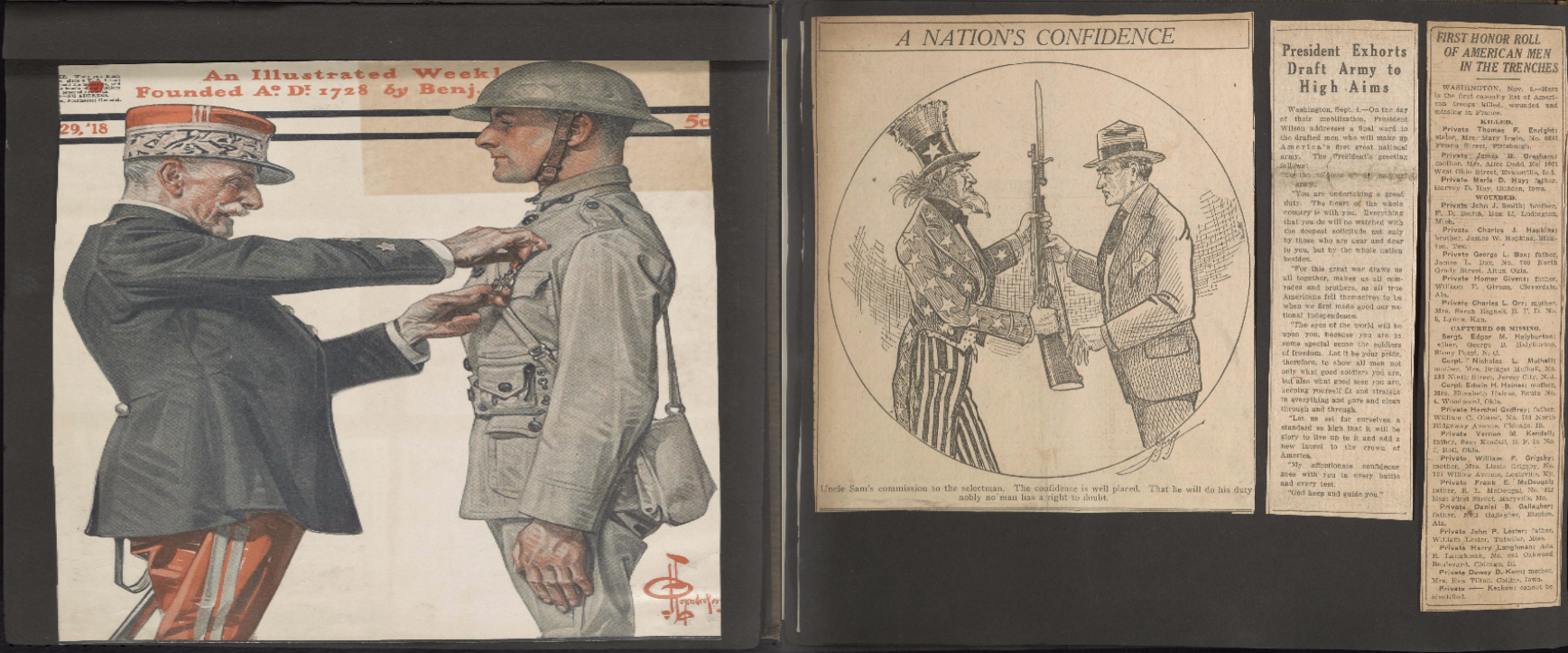
Several scrapbooks from Elon University detail the students’ view of the war as well as what college life during World War I looked like here in North Carolina.
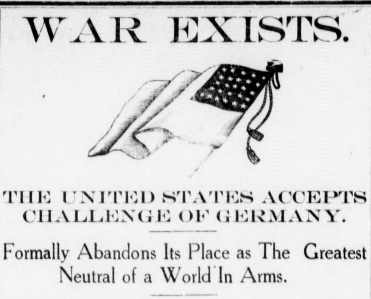
Headline from Page 2 of the April 12, 1917 edition of the Roanoke News
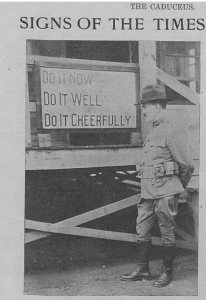
The richest source of information on World War I and North Carolina on DigitalNC may very well be the many local newspapers we’ve digitized that contain the local perspective on the war, including some quite subdued headlines announcing the US’s entry. DigitalNC also hosts several World War I camp and hospital newspapers including the Trench and Camp from Camp Greene and the Caduceus, the paper of the Base Hospital at Camp Greene. Both are from Charlotte Mecklenburg Library.
To view more materials from World War I, check out a search of our collections here. And to learn more about World War I materials from across the state, visit the institutions highlighted in this blog post from our colleagues over at the State Archives of North Carolina.
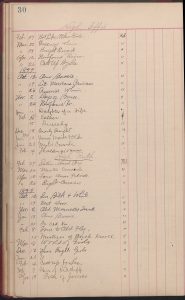
The circulation records of an ambitious student
What books were popular in school libraries over 100 years ago? New material from the Wilson County Public Library give us a fascinating glimpse into the reading habits of young people around the turn of the century. A book of circulation records from Wilson School’s Spring 1899 term details loan records from more than 250 students, showing what they read and when. Popular choices included books still well-known today such as Alice’s Adventures in Wonderland by Lewis Carroll, as well as less currently read volumes such as Young Maids and Old by Clara Louise Burnham.
Wilson County Public Library has also contributed a set of portraits of Reverend Owen L.W. Smith, and his wife Dora Oden Smith. Reverend Smith was born as an enslaved person 1851, but as a young man ran away to join the Union Army when General Sherman marched through the south. He had an impressive and varied career as a school teacher, a Justice of the Peace, a lawyer, a preacher, and the Consul General to Liberia for two terms. He passed away in 1926 in Wilson County.
To learn more about Wilson County Public Library, and see other materials they’ve contributed to DigitalNC, visit their partner page.
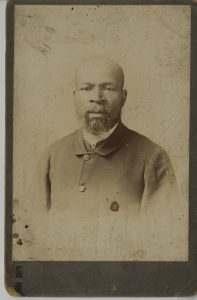
Reverend Owen L.W. Smith
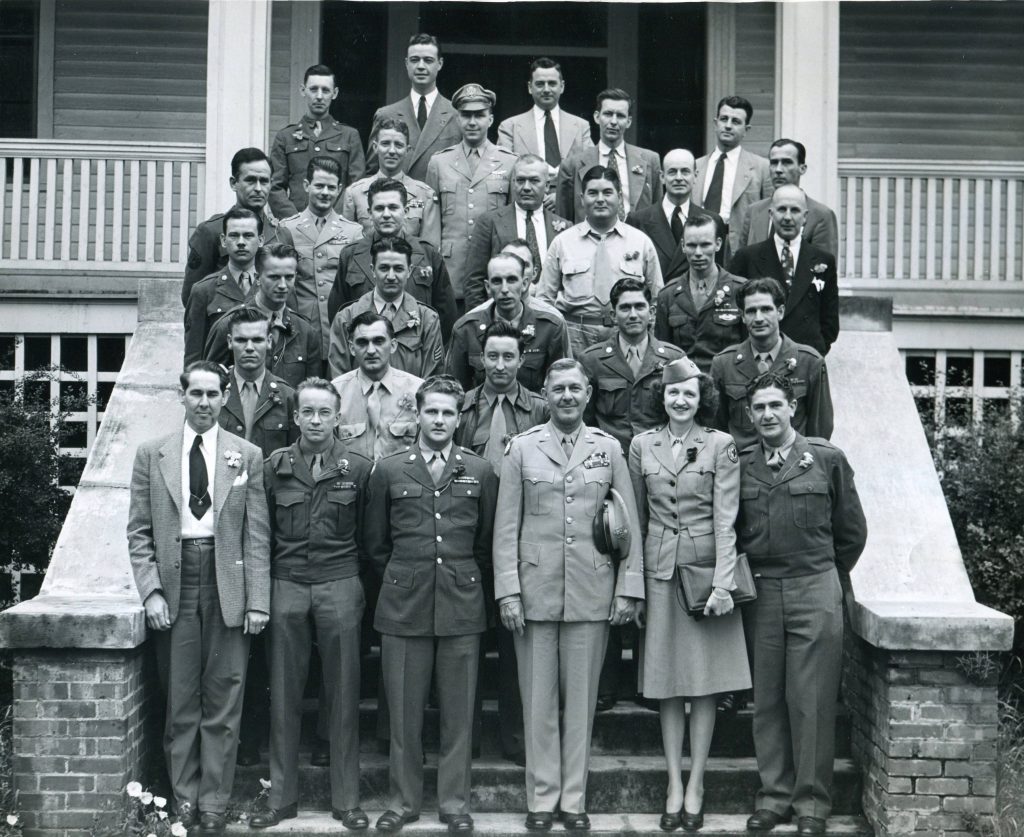
Group of Soldiers Posed with Firestone Officials, from the Gaston Museum of Art & History.
This Veterans Day, we thought we’d mention some best bets for finding and searching materials on DigitalNC related to military history. Some time periods and subjects have better representation than others, so we’ve focused on the five wars that have the most related materials. This post has been updated in 2022 to show the most recent systems for our content.
Tip 1: Search by Subject
To isolate materials that are predominantly about a particular war, you can use the subject specific links listed below.
You can use the Advanced Search (see below where to find in the search window) to narrow your search.
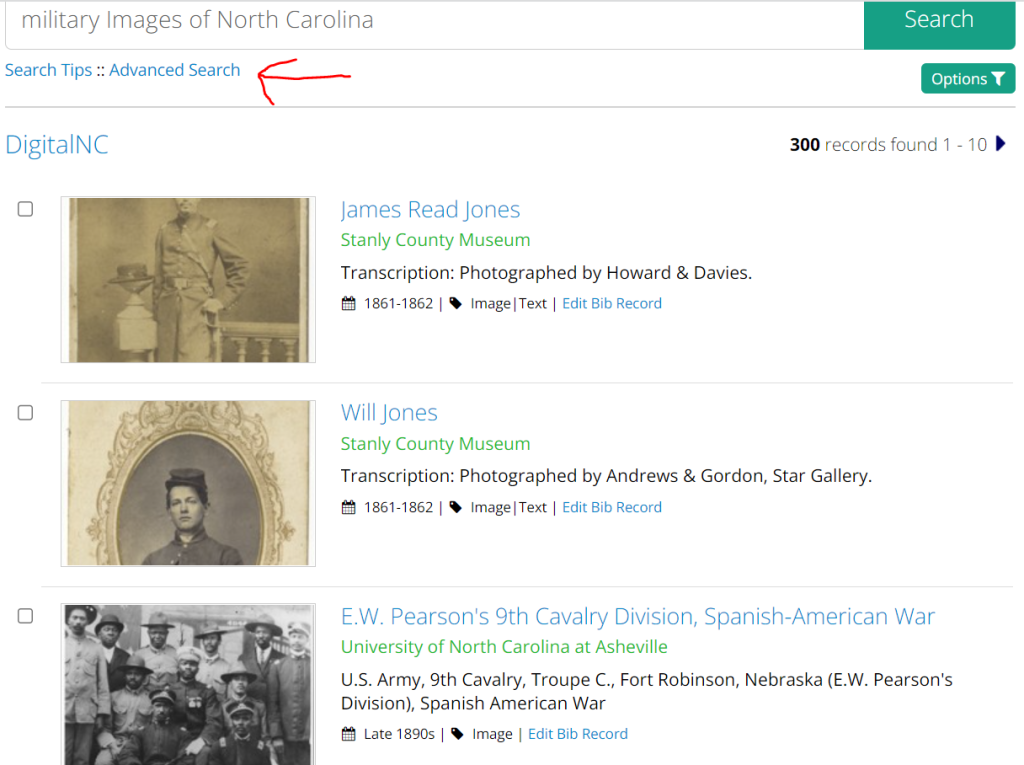
Use the Advanced Search to further narrow your query
If you click one of the links above and then go into the Advanced Search, you can use more terms to further narrow your search. Using “partial phrase” is the best option to get the widest set of options that might fit that term. (see the graphic below that illustrates this)
You can also do a full text search that combines (1) your research interest (perhaps a name, a topic, or an event) in conjunction with (2) the name of a particular war. This may yield a lot more results, depending on your research interest, but it could also zero in on your target faster.
Only interested in photographs? Try this search, which is limited to photos that contain the word “military” or “soldiers” as a subject.
Tip 2: Search by Date Range
Another tactic is to search or browse items that were created during a particular war. These don’t always have that war as a subject term, but they often deal with wartime issues or society regardless.
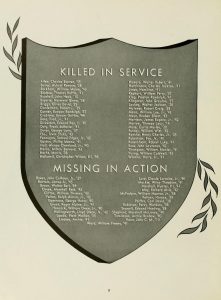
A list of alumni and students killed or missing in action, from the 1944 UNC-Chapel Hill Yackety Yack yearbook, page 12.
Keep in mind that doing a full text search will be ineffective about 98% of the time when it comes to handwritten items on our site, as most do not have transcripts. This is just to let you know that you may need to read through handwritten items pulled up in one of the searches above if you believe they may contain information you’re interested in.
Our partners have shared a lot of yearbooks on DigitalNC and, while they may not be the first thing that comes to mind for military history, many colleges and universities recognized students who served. Especially for the Vietnam, Korean, Gulf, and Afghan wars, yearbooks document campus reactions and protests. You currently can’t search across all of the yearbooks available on DigitalNC; our site has high school yearbooks published up through the late 1960s, and college and university yearbooks and campus publications through 2015.
Tip 3: Newspapers!
Searching the student and community newspapers on DigitalNC can yield biographical information about soldiers, editorials expressing local opinions about America’s military action, as well as news and advertisements related to rationing and resources on the homefront.
The Newspapers Advanced Search is your friend here! You can target papers published during specific years. You can also narrow your search to specific newspaper titles.
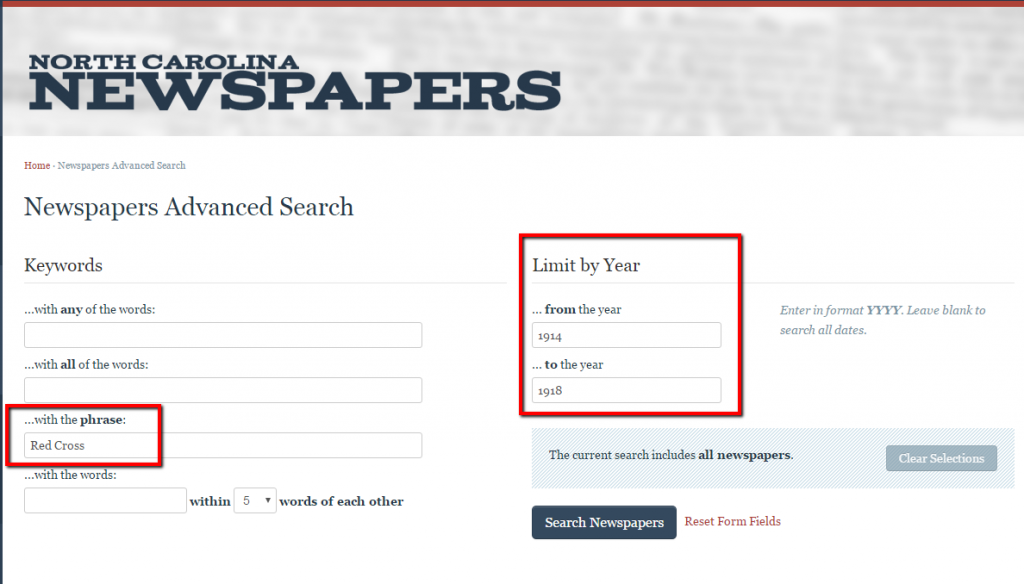
Screenshot of the Newspapers Advanced Search page, with the search phrase “Red Cross” and limiting the results to papers published from 1914-1918.
We now have so many military newspapers on our site, we have a whole exhibit dedicated to them, which you can view by going to our Military Newspapers in North Carolina page.
The titles include:
- Air-O-Mech, published by servicemen stationed at Seymour Johnson Field, 1943-1944
- Cloudbuster, published at UNC-Chapel Hill to share news about the Navy pre-flight school held on campus, 1942-1945
- Hot Off the Hoover Rail, published by the community of Lawndale for servicemen from their city, 1942-1945
- The Caduceus, published by the Base Hospital at Camp Greene (Charlotte, N.C.), 1918-1919
- The Caromount, published the community at Caromount Mills in Rocky Mount “solely for the benefit of all former Blumenthal employees now in the service of our country,” 1943-1955 (later years published for the mill community itself rather than those in the military)
- The Home Front News, published by the Tarboro Rotary Club for servicemen from their city, 1943-1945
- Trench and Camp, published by The Charlotte Observer for Camp Greene, 1917-1918
Bonus Resource: Wilson County’s Greatest Generation
One of the largest exhibits on our site is Wilson County’s Greatest Generation, an effort by the Wilson County Historical Association to document the service men and women of Wilson County, North Carolina who served in World War II. Documentation is organized by individual, and includes personal histories, photos, clippings, and other ephemera.
We hope this information can guide you through researching military history on DigitalNC. If you have any of your own tips or questions, please let us know by commenting below or contacting us.
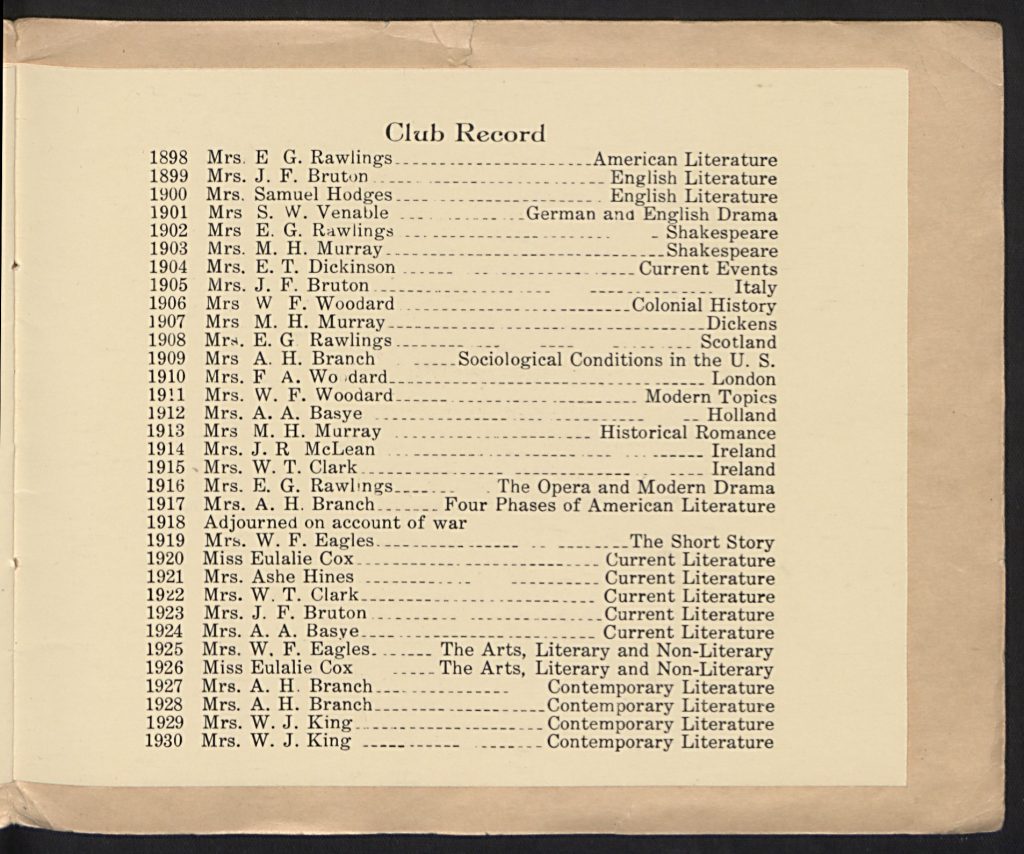
From the 1930-1931 booklet, a listing of the topics of discussion since 1898.
85 more years of the Wilson Book Club programs are now available online, thanks to our partner, the Wilson County Public Library. We have previously posted about the earliest of these programs, dating back to 1901. With the addition of 93 years of programs starting in 1911 and going through 2005, one can now have a good glimpse into changing interests in the literary world and how book clubs operate over the past 100 years. The earliest programs in this new batch often had a subject for that whole year, whether it was based on genre or topic, such as “The Netherlands” or “Modern Irish Literature“. Later years tended to have much more diverse set of subjects across the year, although on occasion still have a primary focus for the year. The 1975-1976 program reflects the bicentennial being celebrated and many of months have a colonial era focus. In addition to the information on the books read, a listing of the club members and who hosted each month is also included in the programs.
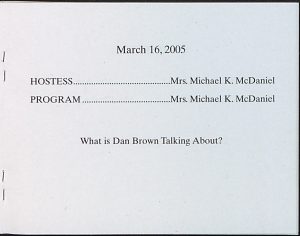
Perhaps a question many of us were asking in 2005.
To view all the book club programs, visit here. And to learn more about our partner Wilson County Public Library and view their digitized materials, visit their partner page.
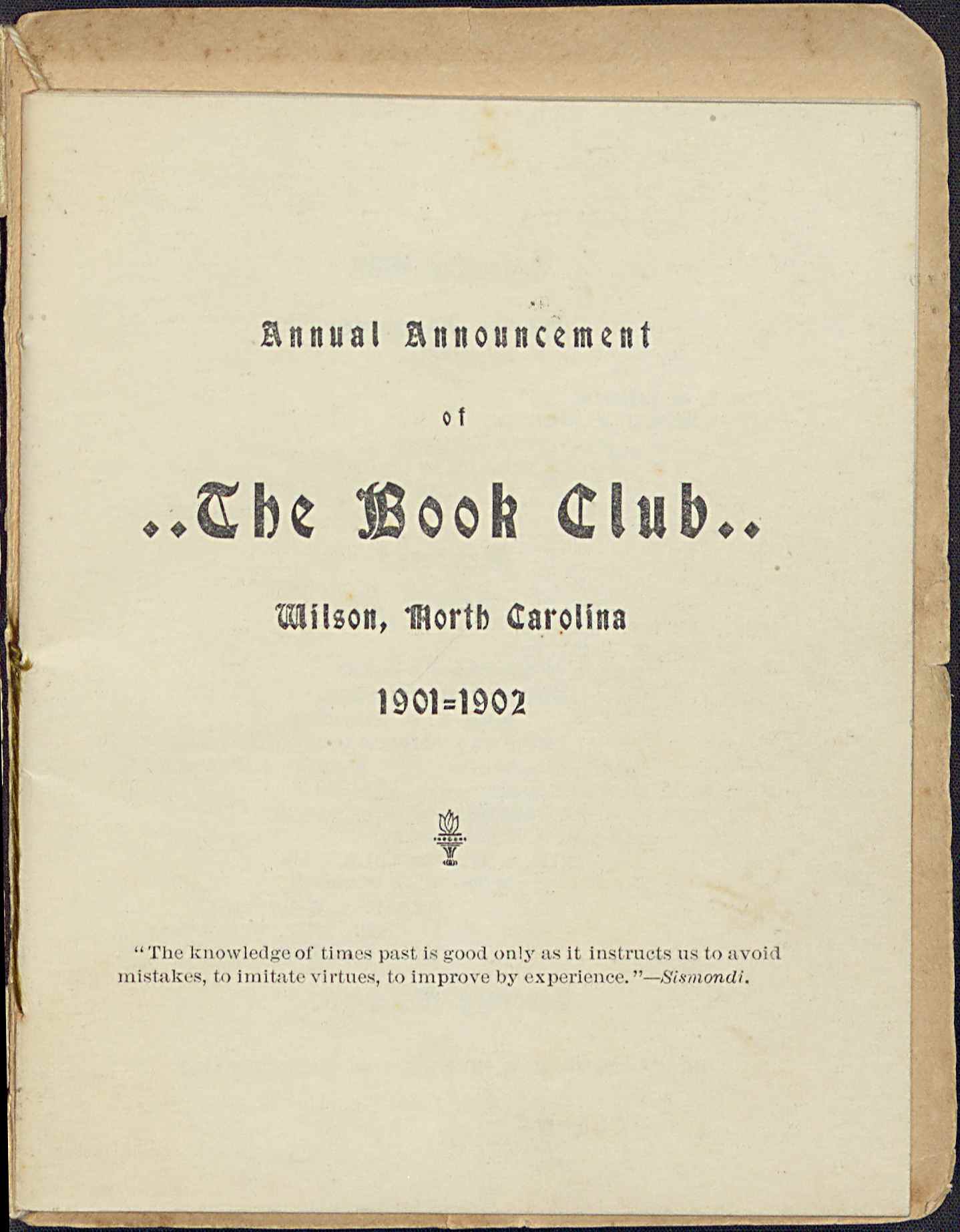
Thanks to the Wilson County Public Library, a decade of Annual Announcements from the Book Club of Wilson are now available on DigitalNC!
Book Clubs are not a new trend and these items prove it! Domestic book clubs originated in England during the 18th century, as women pushed for intellectual autonomy (Heller). The Book Club of Wilson began in 1898 with a group of women who selected readings for monthly discussion. They met in each others’ homes and discussed about half a dozen pieces each month. Dating from 1901-1911, these announcements cover a variety of topics, including Shakespeare, U.S. social issues, and romance in Scotland.
These resources could be useful for researchers interested in women’s education in the early twentieth century, especially outside of the traditional school system. They could also be a fun project or starting point for beginning a book club of your own!
You can see all of the Book Club Annual Announcements at the links below:
- Annual Announcements of the The Book Club, Wilson, North Carolina [1901-1902]
- Annual Announcements of the The Book Club, Wilson, North Carolina [1902-1903]
- Annual Announcements of the The Book Club, Wilson, North Carolina [1903-1904]
- The Book Club of Wilson, North Carolina [1904-1905]
- Annual Announcements of the The Book Club, Wilson, North Carolina [1905-1906]
- Annual Announcements of the The Book Club, Wilson, North Carolina [1906-1907]
- Annual Announcements of the The Book Club, Wilson, North Carolina [1907-1908]
- Annual Announcements of the The Book Club, Wilson, North Carolina [1908-1909]
- The Book Club of Wilson, North Carolina [1909-1910]
- The Book Club of Wilson, North Carolina [1910-1911]
In addition to the book club announcements, Wilson County Public Library also contributed a copy of a baseball Score Card from 1923. This booklet contains photographs and advertisements centering on baseball in Wilson County during the early 1920’s.
To learn more about Wilson County Public Library visit the contributor page or the website.
Heller, Nathan. “Book Clubs: Why do we love them so much? Is it the zucchini bread?” Slate. 2011





























